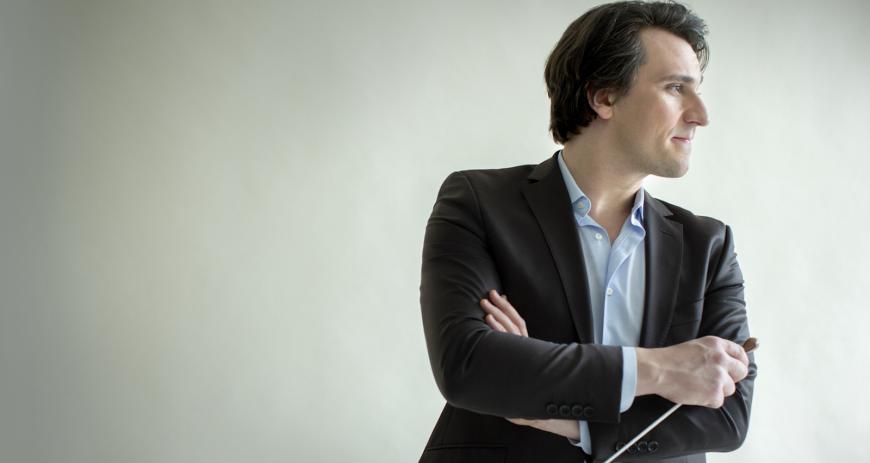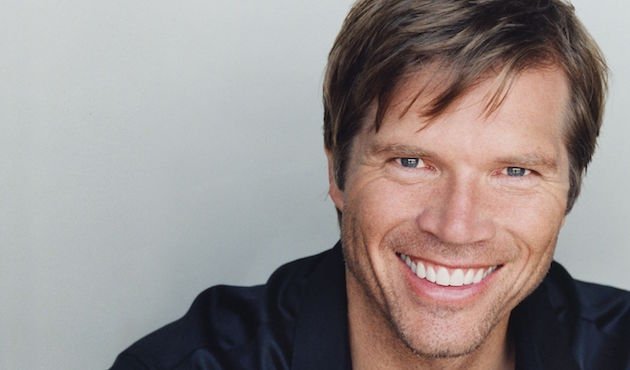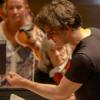
The San Francisco Symphony concerts at the end of November revealed an exceptional young conductor taking his next step. Daniel Stewart offered a probing interpretation of the summit of Ludwig van Beethoven’s symphonic career, as well as the West Coast premiere of Anna Clyne’s Sound and Fury. You couldn’t help but marvel at Stewart’s mastery, conducting from memory, as he did the Beethoven five years ago, with the Santa Cruz Symphony, where he is music director.
In 2019, Stewart became the Wattis Foundation Music Director of the San Francisco Symphony Youth Orchestra. This was his debut with the orchestra.
He seems to have what Buddhists call “beginner’s mind,” in that each time he conducts, it’s fresh and without an assumed omniscience. It’s risky, because it means humility before the score, trusting the composer’s direction. Whatever the alchemy he employs, it worked. The extended standing ovations each night gave testimony to that.
Beethoven marked the first movement Allegro ma non troppo, un poco maestoso: fast, but not too much, a bit magisterial. It was that. Stewart knew that it should be spirited, but not at a breakneck pace, more to make clear the subtleties of tension and release.
The orchestra’s elegant playing of these contrasts gave on to the scherzo second movement, which carried you along with the musical wind in your face, a fitting counterpoint to the light/dark of the work’s opening. Timpanist Edward Stephan drew a line under its drama, as Stewart emphasized first the joyous and galloping abandon of the music and then its triumphant conclusion. The woodwinds, especially Carey Bell’s clarinet, and the strings sang the third movement’s tenderness in an emotional meditation that concluded with a thoughtful summing-up.
The famously dissonant opening notes of the finale signal the entry of the cellos and basses stating the theme and a set of variations that take us into Beethoven’s musical expression of Schiller’s poetry. First, though, Rod Gilfry’s bass-baritone intoned Beethoven’s advice that these sounds are at an end. “Instead, let’s strike up a song that’s more pleasant and more joyful.” He then begins Schiller’s Ode to Joy, joined, in succession, by the rest of the soloists: tenor Mario Chang, mezzo soprano Jennifer Johnson Cano, and soprano Michelle Bradley, along with the San Francisco Symphony Chorus. The Chorus performed beautifully, well prepared by assistant director David Xiques. Michelle Bradley made her San Francisco Symphony debut with these performances. She performed this role in the Santa Cruz Symphony presentation in 2016 and is a graduate of the Lindemann Young Artist Development Program at the Metropolitan Opera, when Stewart was the resident conductor there.

The concert opener piece, Sound and Fury, a 2019 composition by Anna Clyne, is based on the final soliloquy of the title character in Shakespeare’s Macbeth, from which the title is derived, and Haydn’s Symphony No. 60, Il Distratto (The distracted). She takes the listener through a series of musical progressions, selecting elements of each of the six movements of Haydn’s symphony, connecting the timing of the music with the rhythm of the soliloquy. It’s a study in contrasts, with sometimes skittish outbursts of the music against the serenity of the poetry, recited near the end of the work. It deserves a second and third hearing.
Perhaps the audience’s outpouring of emotion expressed after these performances was a cri de coeur, wishing for our emergence from the darkness of this pandemic. If you weren’t there, or if you were and want to hear it again, you can listen to it on KDFC, on-demand; it will be there for a few more weeks.





